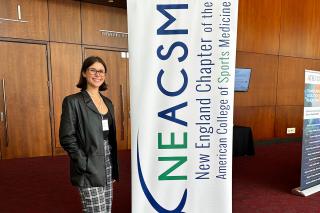PT Education at Simmons University: Accelerated 3+3 Program for First-Generation Students

The Physical Therapy (PT) field is growing rapidly across the United States, and many students are looking for efficient paths to enter the profession. Simmons University’s accelerated 3+3 Doctor of Physical Therapy (DPT) program offers an intensive, fast‑track route, allowing students to finish both undergraduate and graduate coursework in six years instead of the usual seven to eight. This structure is especially attractive to first‑generation students and those who want to transition quickly into clinical practice while taking advantage of the university’s strong mentorship culture and Boston’s expansive healthcare network.
What Makes Simmons’ Accelerated Program Stand Out
The 3+3 model integrates an undergraduate concentration in Health and Exercise Science with the DPT curriculum, eliminating redundant courses and cutting a year off from traditional timelines. The program’s design allows students to earn a Bachelor’s degree by the end of year three, then seamlessly transition into the graduate phase without a break. The result is a more streamlined pathway, lower overall tuition costs, and an earlier start in the clinical workforce.
Key features of the program include:
- Integrated Coursework: Core PT concepts build directly on the foundations laid during the undergraduate years.
- Early Clinical Exposure: Students begin clinical rotations in their second year of graduate study, gaining hands‑on experience while still in school.
- Access to Nationwide Clinical Placements: Through Simmons’ network, students can secure positions in hospitals, private practices, and specialty centers across the United States.
- Mentorship and Small Cohorts: With class sizes typically 12–18 students, faculty can provide personalized guidance.
These elements create an environment that promotes both academic success and professional readiness.
Why First‑Generation Students Choose Simmons
First‑generation college students often face unique challenges: navigating admissions processes, managing family expectations, and adjusting to campus culture. Simmons University’s supportive ecosystem addresses these needs head‑on.
Comprehensive Advising
Dedicated advisors help students identify PT‑specific prerequisites, maintain eligibility, and leverage financial aid options. Advisors also offer mentorship programs that connect first‑generation students with alumni who have traversed similar paths.
Community and Inclusion Initiatives
Through the Office of Inclusive Excellence, Simmons promotes a campus climate that celebrates diverse backgrounds. First‑generation students benefit from support groups, cultural competency workshops, and scholarships aimed at reducing financial pressures.
These resources combine to make the accelerated PT pathway accessible and supportive for students who might otherwise feel apprehensive about entering a rigorous professional program.
Small Class Sizes and Faculty Mentorship: The Human Element
Unlike large lecture halls that can be impersonal, Simmons structures its PT courses around close interactions. Faculty actively know students by name and can tailor teaching techniques to individual learning styles.
Interactive Learning
Classroom sessions often adopt case‑based discussions rather than rote examinations. Students analyze real‑world scenarios— such as a pediatric patient recovering from a traumatic injury— and collaborate to devise treatment plans. This active engagement fosters critical thinking and application skills essential for future PT practice.
Office Hours and Academic Support
Professors make themselves available beyond scheduled class time, ensuring students can ask questions when needed. Many faculty members also serve as mentors for research projects or clinical rotation placements, offering guidance that goes beyond the curriculum.
Hands‑On Career Preparation and Clinical Placement Opportunities
A core component of the PT curriculum at Simmons is its robust clinical rotation program. By the second year of graduate study, students are placed in diverse settings, from orthopedic clinics to rehab centers for chronic conditions.
Strategic Partnerships
Simmons has established affiliations with institutions such as Spaulding Rehabilitation, Boston Medical Center, and several private practitioners across the United States. These relationships provide students with a variety of learning environments, making it easier to find a placement that aligns with personal career interests.
Guaranteed Placement
This unique guarantee ensures that every student completes a clinical rotation. The guarantee removes a significant source of anxiety for applicants and allows them to focus on learning rather than job hunting during the first year of graduate study.
Zuzanna Misztela: A First‑Generation Success Story
Misztela’s journey illustrates the benefits of the accelerated program. A first‑generation student from a Polish-American family, she learned English around the age of seven and initially felt uncertain about the college admissions process. A childhood sports injury sparked her interest in physical therapy, and she decided early on to become a practitioner who helps others overcome similar setbacks.
Accelerated Pathway Choice
She chose Simmons because of the program’s 3+3 structure, stating, “Normally, becoming a Doctor of Physical Therapy takes seven to eight years, but with Simmons’ 3+3 program, I can enter the workforce faster.” This reasoning is echoed by many first‑generation students who value an efficient route to practice.
Boston as a Hub of Healthcare
Misztela also highlighted Boston’s reputation as a health‑care nexus. “The city’s network of hospitals and specialists creates plentiful internship and employment opportunities,” she said. The city’s proximity to institutions such as the McLean Hospital and Boston Children’s Hospital provides a living laboratory for emerging PTs.
Impact of Small Class Sizes
She appreciated the intimate learning environment, which allowed her to ask detailed questions and engage closely with her peers. Despite English being her second language, Misztela found a supportive cohort that helped her bridge communication gaps, underscoring the inclusivity of Simmons’ community.
Research and Case‑Based Learning Approach
Graduates of Simmons’ PT program are well‑versed in evidence‑based practice. Courses such as “Frameworks of Physical Therapy: Musculoskeletal I” incorporate case‑based learning. Students navigate case studies, identify relevant research, and discuss findings using tools like PubMed and Google Scholar.
Developing Independent Researchers
Through these activities, students learn to critically appraise research, apply findings to clinical settings, and communicate results to colleagues and patients. The ability to integrate research into day‑to‑day practice is a key differentiator for PTs entering the job market.
Career Pathways: From Pediatric PT to Prosthetics
After completing foundational coursework, students can specialize in areas such as pediatrics, sports rehabilitation, prosthetics, or neuro‑rehabilitation. Misztela, for instance, plans to focus on pediatric PT with a concentration in prosthetics and amputation, aiming to help children regain mobility and confidence.
Practical Experience in Specializations
During the second year of the DPT program, students select elective courses that align with their chosen career paths. For example, a student interested in prosthetics might enroll in elective “Advanced Prosthetic Prescription,” while those drawn to neurology could take “Neuro‑Rehab Assessment and Management.”
Language Skills and Cultural Competence
Misztela’s bilingual ability illustrates an advantage in modern PT practice. Bilingual practitioners can provide culturally competent care and eliminate miscommunication that can arise with translators. In increasingly diverse patient populations across the United States, such skills enhance treatment accuracy and patient satisfaction.
Leveraging Cultural Nuances in Therapy
Being attuned to cultural expectations allows therapists to set realistic goals for patients, incorporate family preferences in care plans, and foster better therapeutic alliances. These competencies are cultivated throughout Simmons’ curriculum, encouraging students to recognize and celebrate diversity.
Balancing Rigor with Fast‑Track Entry
While the accelerated program is demanding, it offers tangible benefits. Students report that the condensed schedule forces them to manage time effectively, prioritize learning, and foster resilience—all skills valuable in practice.
Time Management Strategies
- Set daily and weekly learning objectives.
- Use block scheduling to allocate study time and clinical rotations.
- Leverage peer study groups for collaborative learning.
- Seek regular feedback from faculty to stay on track.
These approaches mitigate the intensity of the program, ensuring students graduate with the confidence to perform independently.
How to Apply: Step‑by‑Step Guidance
Students interested in the 3+3 track should prepare as follows:
- Research the Program: Review the curriculum, prerequisites, and clinical placement options available at Simmons University.
- Complete the Application: Submit the online application via the university’s admission portal, including transcripts, letters of recommendation, and a personal statement.
- Plan Financial Aid: Explore institutional scholarships, federal aid, and private grants. Simmons offers specific fellowships for first‑generation students.
- Prepare for Interviews: Discuss your motivation for PT, your background, and how the accelerated program fits your career goals.
- Review Acceptance and Enrollment: Once admitted, complete enrollment procedures and register for courses before the start of the first semester.
Graduates who follow these steps can confidently enter the PT workforce within six years—placing them among the fastest‑rising professionals in the field.
Take the Next Step Today
Prospective PT students who value a compact educational timeline, personalized mentorship, and direct pathways to clinical practice should consider Simmons University’s accelerated 3+3 program. Whether you are a first‑generation student looking for a supportive environment or a professional seeking to expedite entry into the field, Simmons offers the resources and network necessary to succeed.
If you’re ready to explore how the accelerated PT program can align with your career goals, submit your application today. More details on the DPT program are available on the university’s website.
Already enrolled or interested in learning more? Schedule a free consultation with our admissions team to discuss how Simmons can help you achieve your professional objectives.
Have questions? Write to us at [email protected] and we’ll connect you with the right resources.
For additional insights into successful PT careers, explore our related articles on the university’s news portal.

